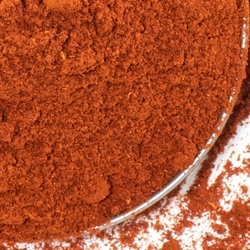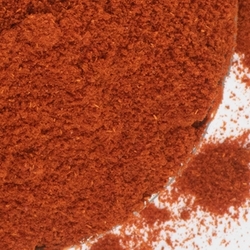Paprika vs Smoked Paprika
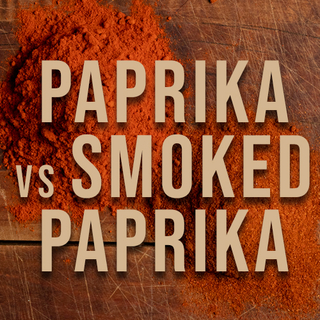
Paprika vs Smoked Paprika
The spice paprika in its many forms--mild, sweet, a little spicy, smoked--is known and loved all over the world. This usually gentle spice has a surprisingly complex history. Its ancestral chile came to Europe with Christopher Columbus and, thanks to the nature of chiles, has since made its way around the world in a variety of forms, sizes, and flavors. All modern chiles, and so all modern paprika, evolved from the chiles that Columbus collected and presented to the court of Ferdinand and Isabella in 1494. 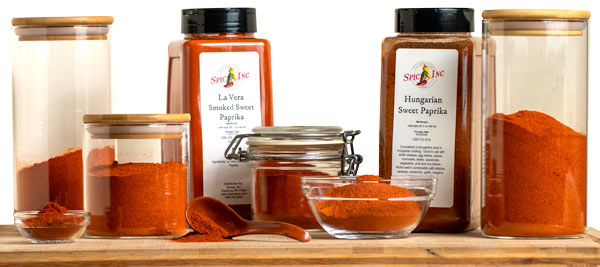
Because chiles are adaptable to different regions, able to be influenced by land and climate, and will readily cross-pollinate, new species and flavor profiles are relatively easy to develop. Europeans did not care for the spiciness of the chile pepper and, over time, dialed back the heat through selective breeding.
Thus evolved the beloved spice called paprika, which is almost exclusively sold as a ground product. Vibrant red and expressing a broad range of heat and flavor, paprika is integral to the cuisines of certain countries, like Hungary and Spain. There are eight different classifications of Hungarian paprika which encompass a wide array of peppers used to make this spice, their heat, and even their color, none of them are traditionally smoked. A true Spanish paprika, or pimentón, is ground from one of four specific varieties of chile, is sweet, bittersweet, or hot. It is commonly smoked and can also be unsmoked, though that version is less sought after.
Flavor of Paprika
Paprika, whether it is sweet or hot, has a gentle, fruity flavor. It adds inviting, earthy warmth that keeps a dish grounded and homey. Most of the paprika used in the US is a sweet variety that’s valued almost as much for its bright color as it is for its versatile flavor. It is a regular addition to many chile-based seasoning blends because it has a subtle, pleasant flavor that is capable of pairing with a host of other spices and herbs.
What is Smoked Paprika?
Smoked paprika comes from Spain and is a smoked version of sweet or hot pimentón, the chiles specifically selected for paprika. Smoking paprika chiles preserves their brilliant color and intensifies their flavor thanks to the addition of oak smoke. The production of all Spanish paprika has been awarded Protected Designation of Origin status, which means its farming and processing is regulated and must conform to traditional standards in order to create consistent quality and be called true Spanish paprika.
To make smoked paprika, peppers at peak ripeness are placed over a low-temperature fire made from oak branches, which impart their particular flavor to the paprika. The fire is kept low so the peppers don’t scorch and the brilliant red color is preserved. Peppers are turned regularly to ensure even drying and are kept over heat for 10-15 days, or until approximately 90% of the moisture has been evaporated. They are then ground into powder.
How to Cook With Paprika
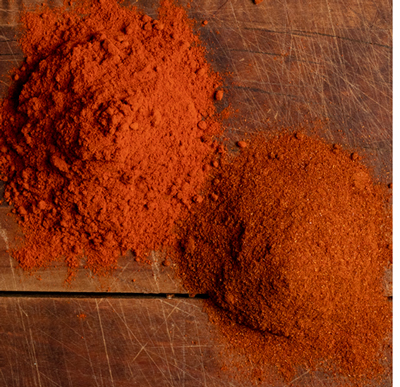 Both smoked paprika and regular paprika contain a relatively high concentration of natural sugar, so they should not be cooked over direct heat for a long period of time because the sugar in them will burn. Cook these spices in some sort of broth, cream, or with a layer of oil to protect it against heat. A long exposure to heat will cause the flavors of paprika to diminish, so add it closer to the end of cooking when possible. Or, check the seasoning of a dish and add more paprika if necessary to boost flavor.
Both smoked paprika and regular paprika contain a relatively high concentration of natural sugar, so they should not be cooked over direct heat for a long period of time because the sugar in them will burn. Cook these spices in some sort of broth, cream, or with a layer of oil to protect it against heat. A long exposure to heat will cause the flavors of paprika to diminish, so add it closer to the end of cooking when possible. Or, check the seasoning of a dish and add more paprika if necessary to boost flavor.
Sweet paprika is wonderful in a variety of spice rubs and chili powders, since it gives the essence of warmth and depth while it lets the other flavors shine. It’s also terrific in marinades, or in creamy dishes like chicken paprikash. It is a standard in paella valenciana. Its bright red color and gentle sweetness makes it a welcome garnish; use it to top deviled eggs, hummus, Hollandaise sauce, or cabbage rolls. Because of its mild nature, you can use a lot of sweet paprika without overwhelming the flavor of your food, though in large quantities it can add a gritty or chalky texture. Always taste your sweet paprika before using, to get a sense of how potent it is, since that can also diminish with age.
Smoked paprika has a rich depth that lends itself to more strongly-flavored uses. Blend smoked paprika into the mix for delicious sausages or stir into spice rubs for ribs. Blend with tomatoes and peppers to make a traditional, Spanish romesco sauce and put that on just about anything. The smoky heft can create an illusion of meaty flavor, so add this to lentil stew, refried beans, or greens that are conventionally cooked with meat, like collards or mustard greens. Use smoked paprika sparingly at first because the smoking process gives this spice intensity, and it can easily overwhelm a dish.
Because of their significantly different flavor profiles, sweet and smoked paprika do NOT make suitable substitutions for one another. The differences between these two related spices are many despite their shared name. Understanding how to highlight the best characteristics of both sweet and smoked paprika allows a successful cook to unlock the door to classic dishes from around the world, and experiment with their own culinary ideas.


